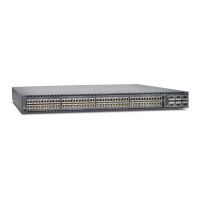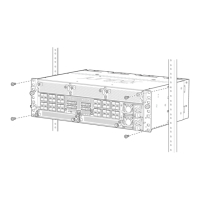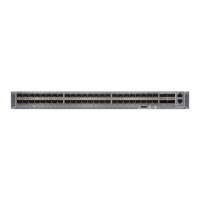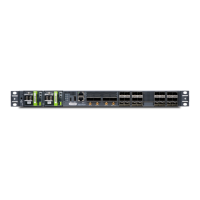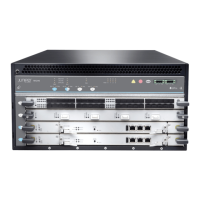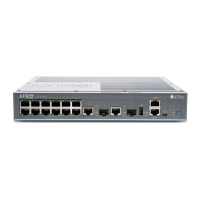3ffe::1:200:f8ff:fe75:50df/64;
}
}
}
}
Related
Documentation
Junos OS VPNs Library for Routing Devices•
• Configuring an Unnumbered Interface
• Configuring the Interface Address
Understanding Encapsulation on an Interface
Encapsulation is the process by which a lower-level protocol accepts a message from a
higher-level protocol and places it in the data portion of the lower-level frame. As a result,
datagrams transmitted through a physical network have a sequence of headers: the first
header for the physical network (or Data Link Layer) protocol, the second header for the
Network Layer protocol (for example, IP), the third header for the Transport Layer protocol,
and so on.
The following topics are general topics about the way encapsulation works on interfaces
and the Junos OS. For the ACX Series routers, keep the following points in mind when
referring to these topics:
•
The [edit logical-systems logical-system-name interfaces interface-name unit
logical-unit-number] hierarchy level is not supported on the ACX Series routers.
•
Not all encapsulation types or features are supported on the ACX Series routers, refer
to the documentation about the specific statement or feature for support details.
Related
Documentation
Configuring Interface Encapsulation on Logical Interfaces•
• Configuring Interface Encapsulation on Physical Interfaces
• encapsulation (Physical Interface) on page 1511
• encapsulation (Logical Interface) on page 1507
Gigabit Ethernet Autonegotiation Overview
Autonegotiation is enabled by default on all Gigabit Ethernet and Tri-Rate Ethernet
copper interfaces. However, you can explicitly enable autonegotiation to configure remote
fault options manually.
Copyright © 2017, Juniper Networks, Inc.104
ACX Series Universal Access Router Configuration Guide
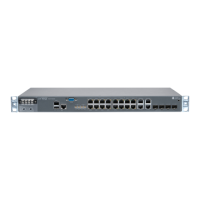
